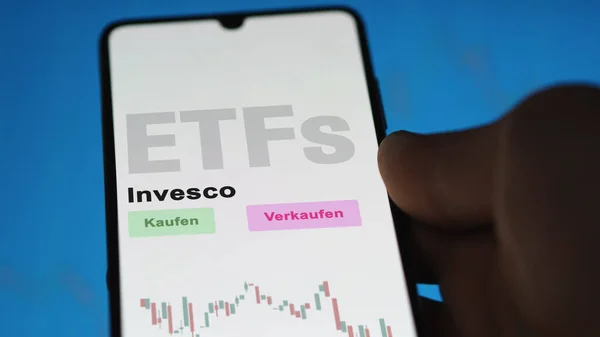With a myriad of investment options available, choosing the right vehicle can make all the difference in your financial journey. Two popular choices are mutual funds and ETFs (Exchange-Traded Funds), each offering unique advantages and serving different investor needs. Understanding what is the main difference between mutual funds and ETFs can set the foundation for a strategic and potentially rewarding portfolio. In this exploration, we’ll delve into the intricacies of both to aid you in making an informed financial decision.
Mutual Fund vs. ETF: An Overview
Mutual funds and ETFs are both tools for diversifying investment portfolios, but they come with distinct features and operational mechanisms. Mutual funds offer professional management and the opportunity to invest in a wide array of stocks, bonds, or other securities, pooling money from a multitude of investors. The key is that the buy and sell orders for mutual funds are executed only once per day, after the markets have closed.
On the flip side, ETFs equip investors with the capacity to purchase and sell shares in a collection of assets while the stock market is open, endowing them with a flexibility akin to trading individual stocks. Furthermore, ETFs are generally more accessible to a wider swath of investors due to typically lower minimum investment thresholds. In terms of costs, ETFs tend to boast lower expense ratios thanks to their passive management style, as opposed to mutual funds which might incur higher fees for their active management.

To compare more tangible aspects:
– Mutual Funds:
– Professionally managed
– End-of-day pricing based on the net asset value (NAV)
– Higher fees due to active management
– Potential minimum investment amounts
– Potential sales charges or loads
– ETFs:
– Real-time trading during the day
– Lower minimum investments
– Passively managed with lower expense ratios
– Real-time pricing often reflecting market price rather than NAV
Key Takeaways
+ Mutual Funds are tailored for investors seeking the expertise of professional managers who actively select securities to potentially outshine market trends. Their end-of-day pricing can appeal to those who prefer a more systematic investment approach without the need for immediate liquidity.
+ ETFs cater to those who value flexibility and control, with the ability to trade shares at precise market prices throughout the trading day. Their lower expenses and potential tax efficiencies make them a favored option for passive investors who focus on long-term growth and lower costs.
Mutual Funds
The traditional mutual fund stands as a testament to collective investment strategies, with professional fund managers at the helm driving investment decisions to safeguard and potentially grow the investors’ capital. The end-of-day net asset value (NAV) determines the price at which mutual fund shares are bought and sold, providing a definitive value reflective of the fund’s assets minus any liabilities.
Unfortunately, this comfort comes at a price:
– Higher expense ratios due to operational and management costs
– Restrictions on swift trading due to potential lock-up periods or minimum holding timeframes
– Minimum investment requirements that might prove challenging for smaller investors
– Entry or exit fees, sometimes as “loads,” that could impact investment returns
Types of Mutual Funds
Diving into the heart of mutual funds reveals a latticework of choices catering to all manners of risk appetites and investment objectives:
+ Equity Funds target company stocks, offering avenues for growth.
+ Fixed-Income Funds sway towards stability through bonds.
+ Index Funds aim for market mirroring and low-cost exposure.
+ Balanced Funds harmonize stocks and bonds favoring a middle-ground approach.
+ Money Market Funds seek security in short-term debts.
+ Sector Funds concentrate on industry-specific opportunities, whilst International Funds cross borders for global engagement.
+ Specialty Funds may channel ethical investing or tailor to retirement timelines with Target-Date Funds.
+ Lastly, Fund of Funds provide multifaceted diversity though potentially layer on extra management fees.
Open-Ended Funds
Ranking amongst the most flexible are Open-Ended Funds:
– Investors can buy in or cash out directly from the fund at any time.
– They exhibit a marked departure from ETFs in that their share prices align with the NAV after market closing.
– Active management may lead to higher fees when optimal market performance is the goal.
– Unique to them is the leniency to execute dollar-cost averaging, permitting regular investments as opposed to the larger lump-sum investments more common with traded ETFs.
Closed-End Funds
The Closed-End Fund (CEF) domain operates with a fixed number of shares:
– An initial public offering (IPO) cements the share quantity, and subsequent trading occurs in the secondary market.
– CEF share values sway with investor sentiment and market dynamics, occasionally straying from the underlying NAV.
– They may carry lofty management fees and employ leverage tactics, thereby elevating potential returns alongside associated risks, which contrast with the relatively lower-cost and index-aligned ETF strategy.
Exchange-Traded Funds (ETFs)
ETFs redefine investment convenience, blending the advantages of stock trading with portfolio diversification:
– Real-time trading mimicking individual stock behavior.
– Passive investment predominance, tracking indices with precision, yet active ETFs expand choices.
– With pricing reflective of live market forces, ETFs offer an adaptable liquidity that mutual funds lack.
– Their tax efficiency and daily transparency imbue investors with knowledge and strategic agility.

By the Numbers…
Considering statistics and operational norms:
– The actively managed nature of mutual funds versus the index-alignment of ETFs.
– ETFs change hands throughout the day compared to the once-a-day mutual fund trade execution.
– The lower administrative costs of ETFs translate into reduced expense ratios.
– ETFs lack mutual funds’ minimum investment barrier, offering broader accessibility.
– ETF tax efficiencies derive from in-kind transactions that limit capital gains distributions, opposed to the potential tax consequences of mutual fund year-end distributions.
ETF Creation and Redemption
The creation and redemption mechanism keeps ETFs aligned with their NAV:
– Authorized participants (APs) trade assets for ‘creation units,’ thereby expanding or contracting ETF share quantities.
– Trading discrepancies between market price and NAV invite arbitrage, ensuring fair value.
– ETFs engage in-kind exchanges, frequently sidestepping capital gains distributions that can be a tax encumbrance in mutual funds.
ETF Benefits
Discerning among the diverse rewards of ETFs:
– Buy/sell flexibility like common stocks, ample for swift tactical shifts.
– Typically lower fees beguile the cost-aware investor.
– Immediate clarity on assets engenders confidence and informed positioning.
– The structural design minimizes tax impact.
– A convenient one-stop diversification option spans asset classes and investment theses.
Types of ETFs
The ETF universe unfolds as a galactic sprawl of investment pathways:
– Equity ETFs: Embrace market sectors or broader indices.
– Bond ETFs: Cater to varying income appetites through government to corporate bonds.
– Commodity ETFs: Channel commodity market involvement without tangibility.
– Sector and Thematic ETFs: Hone in on industry trends or future-focused themes.
– International ETFs: Offer passports to worldwide market participation.
Mutual Funds vs. ETFs
To encapsulate:
– Mutual funds collectively venture with active management, weighted till the market respite for share pricing.
– ETFs perform in the exchange arena, available for transaction from bell to bell with ongoing pricing dynamism.
– ETFs entice with liquidity and fiscal practicality; mutual funds demand higher stakes and dispense advisory costs.
– For the nimble shareholder, ETFs dispense single share simplicity, devoid of load levies.
Mutual Fund vs. ETF Redemption Example
Redemption realities:
– Mutual funds restore capital post-trading day-end based on NAV, while open market trades decide the ETF’s extrication terms.
– Exacting transaction costs or tax implications may burden mutual fund redemptions, whereas ETFs persist in tax prudence and fee constraint.
Is It Better to Invest in the Market Through a Mutual Fund or ETF?
Reflective choices stem from investment disposition:
– Mutual funds – the avenue for the less involved, trusting in professional judgment.
– ETFs – the path of the perceptive patron with cost and trade timing in lens.
– Asynchronous trading of mutual funds juxtaposes with the incessant exchange presence of ETFs, fundamental in investor’s tactical dexterity.
Are ETFs Riskier Than Mutual Funds?
Risk disparities draw lines between ETFs and Mutual Funds:
– ETF trade cadence may spark volatility; mutual funds by their very construct facilitate a steady valuation.
– Fees chipped off by mutual fund activity might dampen the gains, an affair less entangled with ETFs’ lower-cost setup.
– ETF transparency daily illuminates holdings, inviting agile decision-making; mutual funds’ periodic disclosures may lag too far behind market evolutions.
– ETF creation/redemption can help quell the tax bill, a convenience less apparent in mutual fund distributions.
From parsing the active and passive management styles to scrutinizing fees and investment access, the contrasts between mutual funds and ETFs are as numerous as they are crucial.
Continuing with the debate on whether ETFs are riskier than mutual funds, it’s vital to address the core distinctions that govern their risk profiles. The main difference lies in how investors buy and sell shares. ETFs are traded like stocks on an exchange; prices fluctuate throughout the trading day, offering opportunities for tactical trades, potentially leading to quick gains or losses. This market-driven price can sometimes cause ETFs to trade at a premium or discount to the actual value of the underlying securities. Mutual funds, in contrast, are bought and sold directly with the fund company at the net asset value (NAV), priced once at the end of each trading day. This structure can offer a more stable, albeit less flexible, investment approach. Investors should weigh these factors, considering their investment horizon, liquidity needs, and risk tolerance when choosing between mutual funds and ETFs as part of their diversified investment strategy

2 thoughts on “What Sets Mutual Funds Apart from ETFs?”